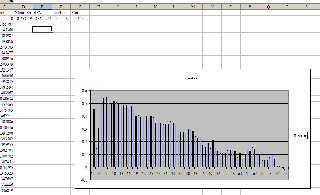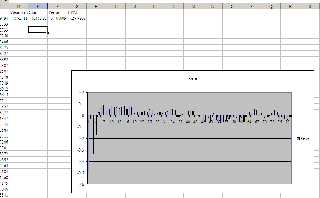 |
 |
|
 |
|
 |
|  |
|  |
|
 |
|
 |
|  |
|  |
|
 |
On 6/8/2010 7:29 AM, Invisible wrote:
>>> Oh, wait - you'd need a hex editor to do that...
>>
>> I hear there's a nice one coming out ... some time. Written by a
>> member of this newsgroup, too!
>
> Yeah, there is. Just as soon as I finish writing it. :-P
You're writing one, to? Et tu, Andy?
--
~Mike
Post a reply to this message
|
 |
|  |
|  |
|
 |
|
 |
|  |
|  |
|
 |
On 6/8/2010 7:30 AM, Invisible wrote:
>> Ludicrously difficult is programming in machine code for a processor
>> that doesn't yet exist's micro-ops. ;)
>
> That depends on how complex the processor is, now doesn't it? ;-)
I suppose, but it makes debugging a royal PITA either way ;)
--
~Mike
Post a reply to this message
|
 |
|  |
|  |
|
 |
|
 |
|  |
|  |
|
 |
>>>> Oh, wait - you'd need a hex editor to do that...
>>>
>>> I hear there's a nice one coming out ... some time. Written by a
>>> member of this newsgroup, too!
>>
>> Yeah, there is. Just as soon as I finish writing it. :-P
>
> You're writing one, to? Et tu, Andy?
I had a go at writing one, and eventually gave up.
Post a reply to this message
|
 |
|  |
|  |
|
 |
|
 |
|  |
|  |
|
 |
>>> Ludicrously difficult is programming in machine code for a processor
>>> that doesn't yet exist's micro-ops. ;)
>>
>> That depends on how complex the processor is, now doesn't it? ;-)
>
> I suppose, but it makes debugging a royal PITA either way ;)
Again, depends how complex. ;-)
Post a reply to this message
|
 |
|  |
|  |
|
 |
|
 |
|  |
|  |
|
 |
On 6/8/2010 8:16 AM, Invisible wrote:
> Again, depends how complex. ;-)
OK, How about this one. Coding x86 Machine Language with no assembler.
That's difficult ;)
--
~Mike
Post a reply to this message
|
 |
|  |
|  |
|
 |
|
 |
|  |
|  |
|
 |
Mike Raiford wrote:
> On 6/8/2010 8:16 AM, Invisible wrote:
>
>> Again, depends how complex. ;-)
>
> OK, How about this one. Coding x86 Machine Language with no assembler.
> That's difficult ;)
Hell yes. But that's because the x86 system has become ridiculously
over-complicated with decades' worth of backwards-compatibility crap.
(E.g., real-mode exists, even though most desktops spend less than 0.01%
percent of their time running in this mode.)
Post a reply to this message
|
 |
|  |
|  |
|
 |
|
 |
|  |
|  |
|
 |
Mike Raiford <"m[raiford]!at"@gmail.com> wrote:
> On 6/8/2010 8:16 AM, Invisible wrote:
>
> > Again, depends how complex. ;-)
>
> OK, How about this one. Coding x86 Machine Language with no assembler.
> That's difficult ;)
At least you only need 3 keys on your keyboard ;-)
http://homepages.strath.ac.uk/~cjbs17/computing/binary.html
Post a reply to this message
|
 |
|  |
|  |
|
 |
|
 |
|  |
|  |
|
 |
Invisible wrote:
> That's quite nice, but a cursory inspection of the JavaScript code
> reveals how it works: In effect, the first keypress starts a timer. The
> displayed BPM is simply the time elapsed between the first and most
> recent keypress divided by the total number of presses.
>
> Now I'm wondering if I can come up with something a little more
> accurate. (Although, obviously, accuracy is ultimately determined by how
> good your coordination and sense of rhythm are!)
Take a look at the attachments.
The first one shows the normal prediction method - take the duration of
time between the first and last tap, divide by the number of taps. This
gives you the beat period (i.e., seconds/beat). The BPM figure is just
the reciprocol of this (with some conversion of units).
As you can see, if you compare the predicted beat times to the actual
taps entered, there's quite a lot of error. But, more seriously, the
error shows a pronounced linear trend. In other words, the BPM figure is
wrong, causing the taps and the prediction to gradually change their
phase relationship.
Now take a look at the second attachment. This is produced using a
propper linear regression. (Simple least squares, apparently.) Here the
algorithm has quite rightly detected that the first few taps are
horribly out of time, while the remaining ones fit neatly onto a regular
beat grid at 129.98 BPM (verses the 131.72 BPM detected by the other
method).
I notice there's still a slight linear trend to the errors, so maybe the
true BPM figure is actually lower still.
What the first method is doing is basically setting the prediction error
of the first and last tap to exactly zero, and linearly interpolating
between. This works horribly if the first and/or last taps are
particularly out of time. It's basically using 2 data points to detect
the right BPM figure.
On the other hand, I'm not sure, but I'd guess that *least squares*
linear regression probably assigns a large penalty to points with large
errors. In other words, out-of-time points are especially significant.
Obviously what *I* want is for out-of-time points to be especially
*insignificant*. I want to maximise the number of points with low
errors, not minimise the total error size.
Also, I have no idea how to compute a confidence value for the
regression predictions, other than by using the statistics of the tap
time-deltas as an estimate...
Post a reply to this message
Attachments:
Download 'bpm1.png' (25 KB)
Download 'bpm2.png' (21 KB)
Preview of image 'bpm1.png'

Preview of image 'bpm2.png'

|
 |
|  |
|  |
|
 |
|
 |
|  |
|  |
|
 |
Invisible wrote:
> Now take a look at the second attachment. This is produced using a
> propper linear regression. (Simple least squares, apparently.)
In solomn truth, both the simple and fancy algorithms tend to produce
very similar results, given the same data. Regression fit produces
smaller error values by getting the phase alignment correct, but they
both report roughly the same BPM reading.
Also, they are both equally perplexed by missing / additional beat
signals, so I need to go figure that out...
Post a reply to this message
|
 |
|  |
|  |
|
 |
|
 |
|  |
|  |
|
 |
> Also, they are both equally perplexed by missing / additional beat
> signals, so I need to go figure that out...
With your array of times-between-beats, calculate the mean and sd of the
whole array, then remove any entries that are outside of the mean +/- N*sd
before you do your BPM calculation. You can choose N based on the results,
but I guess around 1 should work.
Post a reply to this message
|
 |
|  |
|  |
|
 |
|
 |
|  |




![]()